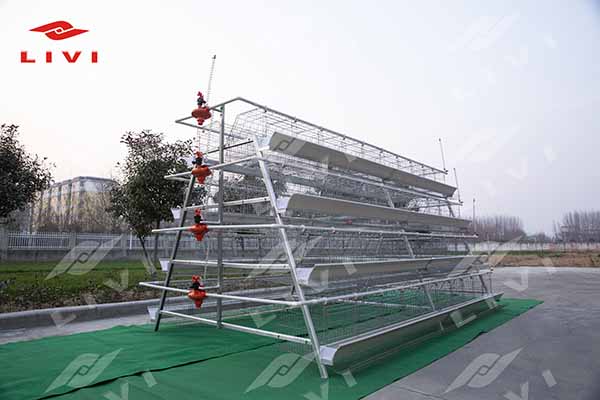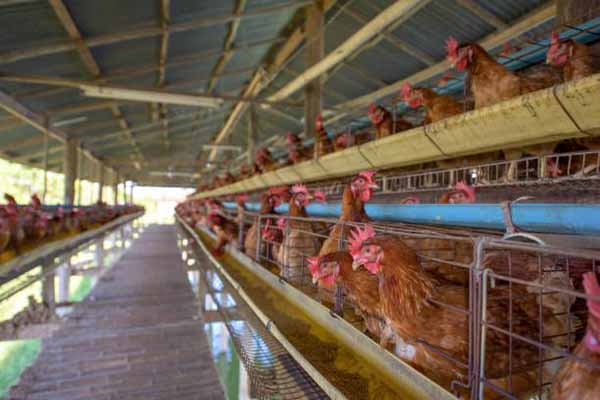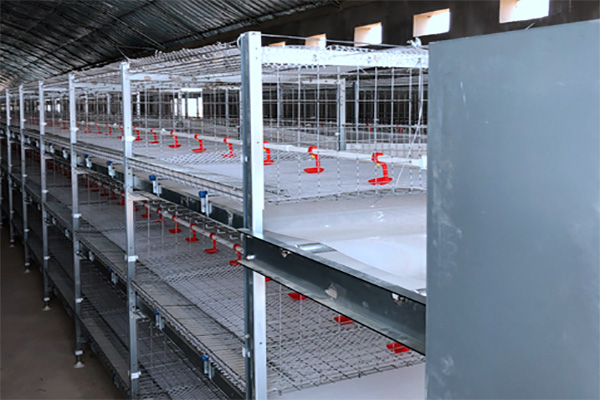3-Tier Chicken Broiler Cages: A Comprehensive Guide to Professional Farming
Time : 2025-07-03
Introduction
In the modern poultry farming industry, the use of 3-tier chicken broiler cages has become increasingly popular. These specialized cages offer numerous advantages over traditional brooding methods, such as better management of flock health, increased efficiency, and improved productivity. This article aims to provide a comprehensive guide to 3-tier chicken broiler cages, covering their design, benefits, maintenance, and considerations for optimal use in poultry farming operations.

Understanding 3-Tier Chicken Broiler Cages
3-tier chicken broiler cages are specifically designed for raising chickens, particularly broiler breeds, in a compact and efficient manner. These cages are usually made of metal and feature a multi-tiered design, allowing for vertical stacking of up to three levels. This design maximizes the use of space and enables farmers to raise a larger number of birds in a smaller area.
Each tier is equipped with feeding and watering systems, as well as a solid floor that prevents birds from wandering. The cages are often equipped with ventilation and heating mechanisms to maintain a favorable environment for the birds throughout the year.
Design and Construction
The construction of 3-tier chicken broiler cages involves careful consideration of various factors to ensure the health, comfort, and well-being of the birds. Here are some key aspects of the design and construction process:
- Material Selection: High-quality steel is typically used for the frame and wire mesh due to its durability and corrosion resistance.
- Size and Layout: The dimensions of the cages should be suitable for the size of the chickens being raised. Proper spacing is essential to ensure that birds have ample room to move, eat, and rest.
- Feeding and Watering Systems: Automated feeding and watering systems are integrated into the design to streamline feeding operations and reduce waste.
- Ventilation and Environmental Control: Cages are equipped with adjustable ventilation systems to control temperature and humidity levels, promoting better health and growth.
- Safety and Accessibility: Cages should be designed with safety in mind, including easy access for farmers to handle the birds and perform regular maintenance.
Benefits of 3-Tier Chicken Broiler Cages
Utilizing 3-tier chicken broiler cages offers several benefits, including:

- Space Efficiency: Vertical stacking reduces the land area required for poultry farming, allowing for more birds to be raised on less land.
- Improved Health: The confined environment of the cages helps to reduce the spread of diseases among birds.
- Increased Productivity: The controlled environment of the cages, combined with efficient feeding and watering systems, can lead to higher growth rates and better meat quality.
- Ease of Management: Cages allow for easy monitoring and management of the flock, reducing labor costs and improving overall efficiency.
Maintenance and Care
<p Proper maintenance is crucial to ensure the longevity and effectiveness of 3-tier chicken broiler cages. Here are some essential maintenance tasks:
- Regular Cleaning: Cages should be cleaned thoroughly after each batch of chickens to prevent the build-up of dust, dirt, and waste.
- Inspection: Regularly inspect the cages for signs of wear and tear, such as rust, broken wires, or loose components, and address these issues promptly.
- Ventilation Checks: Ensure that the ventilation systems are functioning properly to maintain an optimal environment for the birds.
- Wire Mesh Replacement: Replace worn-out wire mesh to prevent injuries to the chickens and to maintain the structural integrity of the cage.
Considerations for Optimal Use
When using 3-tier chicken broiler cages, farmers should consider the following factors to achieve optimal results:
- Breed Selection: Choose broiler breeds that are well-suited to the environment provided by the cages.
- Feeding Strategy: Develop a feeding strategy that takes into account the age, size, and nutritional needs of the birds.
- Health Management: Implement a comprehensive health management plan to prevent and treat diseases.
- Training Staff: Ensure that all staff members are properly trained in the use and maintenance of the cages.
Conclusion
3-tier chicken broiler cages are a valuable tool for modern po ultry farmers looking to increase efficiency, improve health management, and enhance productivity. By understanding the design, benefits, and maintenance requirements of these cages, farmers can make informed decisions to optimize their operations.
ultry farmers looking to increase efficiency, improve health management, and enhance productivity. By understanding the design, benefits, and maintenance requirements of these cages, farmers can make informed decisions to optimize their operations.











